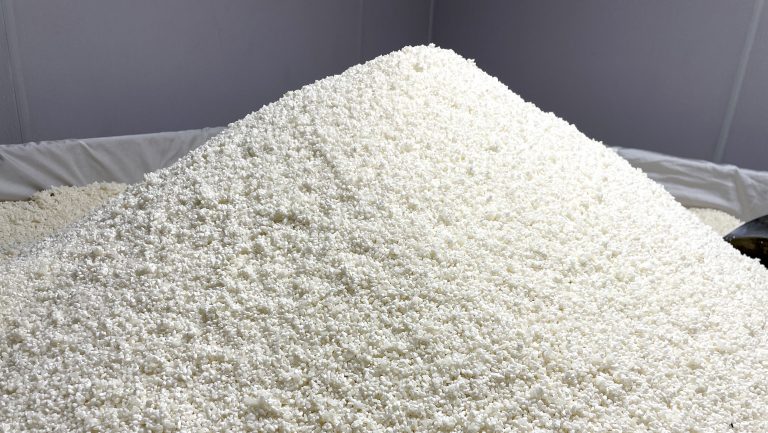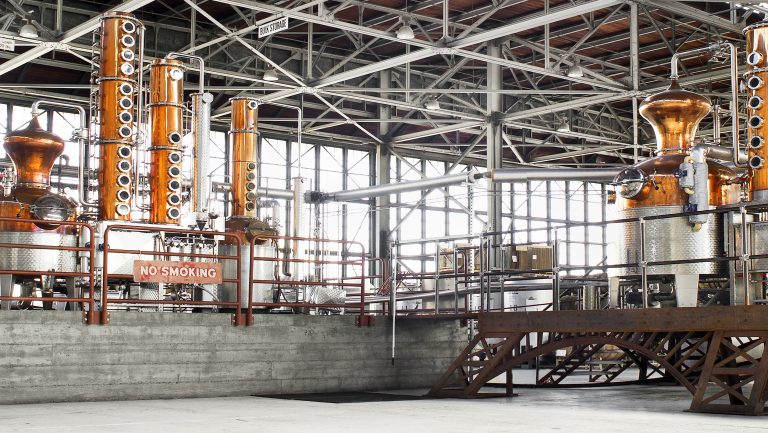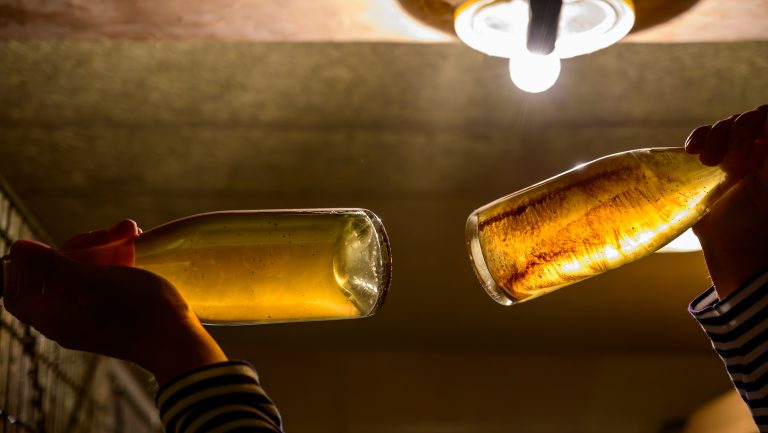First came fire. Then came wine. Apart, they may give us pleasure, but when they merge—when fires blaze across the Australian bush, climb piney Pacific Northwest forests, and devour homes and drought-stricken grassy woodlands in California—and they fill the skies over vineyards with smoke, there may be a problem for wine: smoke taint. With fires raging during the height of growing season—including in Chile in January, and in Côtes de Provence and California’s Santa Maria Valley, fires that have been in the headlines recently—this issue is more timely than ever.
Smoke taint starts when volatile phenols that are present in wildfire smoke are absorbed into grape skins and vine leaves. These phenols are transformed within the plant and bind with sugar molecules to form what are known as phenolic glycosides. Each volatile phenol can then form up to seven nonvolatile precursor compounds, including guaiacol and 4-methylguaiacol, that can be hydrolyzed during fermentation, releasing the phenol portion. Release enough of these, and the result can be a wine with smoke taint.
Some 200 chemical compounds are released in a fire, and what gets released in a softwood forest versus a hardwood forest versus an Australian bushfire may be different. Not all fires worry winemakers: In eastern Washington, for example, smoke from forest fires doesn’t always reach the vineyards—or may not be thick and dense enough when it does to have any impact. Grass fires that border vineyard rows may pose the greatest concerns for these vineyards. Yet fires that raged in California in 2016 sent smoke that could be seen and smelled in vineyards 20 miles away.

Don’t miss the latest drinks industry news and insights. Sign up for our award-winning newsletters and get insider intel, resources, and trends delivered to your inbox every week.
How close the grapes have to be to a fire to undergo smoke taint is still an open question. “It’s more a matter of how smoke is carried into a vineyard, the intensity of smoke, and the duration of the exposure,” says Tom Collins, an assistant professor at Washington State University’s Wine Science Center. To understand the process better, Collins has set hoop houses over grapes at WSU’s research winery at the Ste. Michelle Wine Estates and is exposing the grapes to different smoke sources at different times in their life cycles and for different durations. He then tests the grapes. He’s also testing virgin grapes to see what levels of the taint-producing compounds might exist naturally in unsmoked grapes. What is known is that the impact from a smoke event on a vineyard doesn’t carry over from one year to another—phenolics don’t stay in the vine, for example—and that grapes are most vulnerable to the effects of smoke from veraison through harvest.
Know Thine (Volatile Phenolic) Enemy
Since 2008, ETS Labs has been testing whole berries—not juice but grapes—exposed to smoke for the compounds guaiacol and 4-methylguaiacol, and they’re testing that fruit as close to harvest as possible. Knowing the levels of these two indicator compounds can help winemakers assess their risk of smoke taint, according to Gordon Burns, cofounder and technical director of ETS Labs. From there, his clients can choose whether or not they’ll make a wine—and how they might attempt to mitigate risk through carbon filtering, reverse osmosis, or other methods.
Because the compounds are concentrated within the grape skins, winemakers using grapes that might be at risk are encouraged to harvest by hand, pick at night when it’s cool, and limit skin contact as much as possible. The limiting of skin contact is easier, obviously, with whites than with reds. Yet reds might hide smoke taint more easily, whether that’s thanks to oak treatments or because some of the chemicals being measured already exist within some grapes in very small concentrations. Is that, after all, what gives Syrah its smoky notes?
As for barrel aging, that may be a matter of style. While aging in charred oak barrels would be silly—those smoky compounds are also found in charred barrels—some think that new oak could serve to camouflage unwanted smoke.
“At low to moderate levels, oak treatment and tannin additions have been shown to mask some of the effects of smoke taint,” says Mark Krstic of the Australian Wine Research Institute. “It has to be low levels of taint. It doesn’t mean they aren’t there; it just means you’re trying to overwhelm the chemistry—the sensorial aspects of it—with more of those particular compounds.”
Ghost in the Bottle
Wines at risk of smoke taint should be moved quickly. They’re best consumed young, as sometimes volatile phenolics can reemerge, even in wines originally deemed sound. That’s because compounds taken up by the grape attach to sugar to form glycosides. While attached to the sugar they may be undetectable, but over time—including in the bottle—these glycosides can slowly detach and revert to their free-form state. Suddenly, that smoky smell or ashy taste may emerge. This happened to multiple winemakers in Australia, especially after the 2002 fire in Victoria, says Krstic. Grapes that seemed fine initially developed sensory problems when put through the winemaking process and given a little age.
“We can actually have a situation where the grapes look good, and you make some wine, and it all looks good, but as the wine ages this problem becomes worse,” says Krstic. “It’s based on that glycoside fraction in the wine.
“Interestingly,” he says, “most people, if they were to taste, in a wine solution, these particular compounds that are attached to sugars, they wouldn’t be able to taste them—they become tasteless.
“We see the glycosides as the iceberg under the water,” Krstic goes on. “So what you see on the top of the iceberg is this smelly, free-volatile fraction, which you can sense and say, ‘I can smell that, it’s a risk, I can see that in the grapes. I’m not going to take the risk to convert them into wine.’” But lurking beneath the surface of this iceberg are the glycosides, which sit there, undetected. “As [the wine] ages it slowly releases from what we call the glycosidic—or the bound form—back into the free forms, which you can smell.” This is why, since 2009, they’ve developed a chemical test that measures not only the volatile phenol fraction but also the glycosides.
Hold, Fold, or Bulk
For some winemakers, making a wine from grapes exposed to smoke, even at lower levels, isn’t worth the risk.
In 2008 and 2016, one Monterey County winery had fires within a quarter mile of the vineyard. The 2016 Soberanes Fire (pictured in the photo above), which raged through the nearby Big Sur wilderness, was especially harmful. “We sampled over 100 berries from over 100 plants in a representative sampling pattern across each block tested,” says the vineyard manager, who did not want to be named. “We chose our cross section to encompass the whole vineyard—and once we discovered our numbers were so high, we did not continue testing. I imagine if our numbers had been anywhere near acceptable levels, we would have then resampled on a variety basis.” In the end, the winery chose not to harvest the grapes.
When there is exposure and detectable levels of taint-producing compounds in the grapes, winemakers have a host of decisions to make, from whether or not to make a wine to when to tell the customer.
“To me, the human side of it is, how forthcoming should wineries be?” says Bonny Doon’s Randall Grahm. “It’s a little bit like a social disease; when do you disclose that you have it? Is it going to affect your first perception of the wine? Are they going to like you better for having been honest; are they even going to notice? It really raises a whole host of ethical questions, I think. At what point do you tell your customers, ‘I think we’ve got a problem here?’”
It’s not a conversation Grahm wants to have. When he had smoke exposure on two small lots a few years back he was was able to blend one to a level of undetectability; the other had to be bulked off at a considerable loss. Still, there were a number of other vineyard sites that could have had smoke taint problems, but mercifully, he says, they were spared. He doesn’t expect to always get so lucky.
“We keep dodging bullets,” Grahm says, “but at a certain point a bullet has got your name on it. And we’ll have to deal with that when and if the time comes.”
Getting a Taste of Smoke Taint
Not all smoke taint is off-putting, however. A recent tasting of the Vini Franchetti Passopisciaro 2012 Franchetti from the slopes of Mount Etna revealed a pleasant side to what can happen when wine is made from grapes exposed to smoke. In 2012, fires set by local shepherds burned right up to the vineyard at Passopisciaro. The winery left grapes from the exterior rows on the vine but harvested the rest. Here, then, was a blend of Petit Verdot and Cesanese d’Affile with only the slightest hint of smoke on the nose and palate. No ashtray, no cresol. If we hadn’t been tasting a vertical of an unsmoked and smoked, we likely wouldn’t have known the difference. Perhaps those barbeque notes were a result of barrel aging, we might have thought, or, as with Syrah, a hallmark of the Cesanese d’Affile grape.
Even now, we’re just beginning to understand smoke taint. It has only been in the last 15 or so years, since bushfires swept across Australia in the early 2000s, that growers and winemakers have been studying smoke’s effect. Already we’ve learned that smoke exposure affects only grapes in a single vintage, and that that taint can—but doesn’t always—reappear later in the bottle. But as climate change progresses, as more fires burn around grape-growing regions from South Africa to British Columbia to the western U.S.—where over the last 30 years the acreage burned in forest fires has nearly doubled that expected—mitigating against smoke may become next to impossible. Instead, it will be up to researchers to find out how to test for taint, and winemakers to figure out how to overcome the phenolics when they strike.

Dispatch
Sign up for our award-winning newsletter
Don’t miss the latest drinks industry news and insights—delivered to your inbox every week.
When she’s not writing about beverage, travel, or weird science, Julie H. Case can be found deep in America’s forests, foraging for mushrooms.







